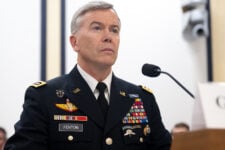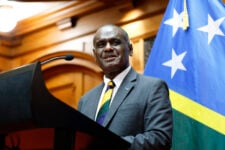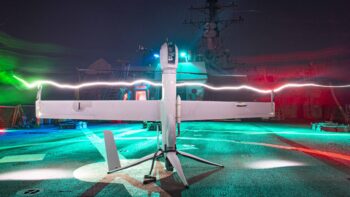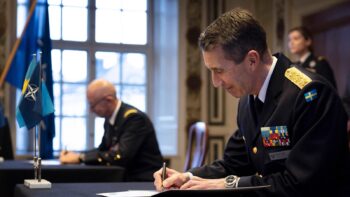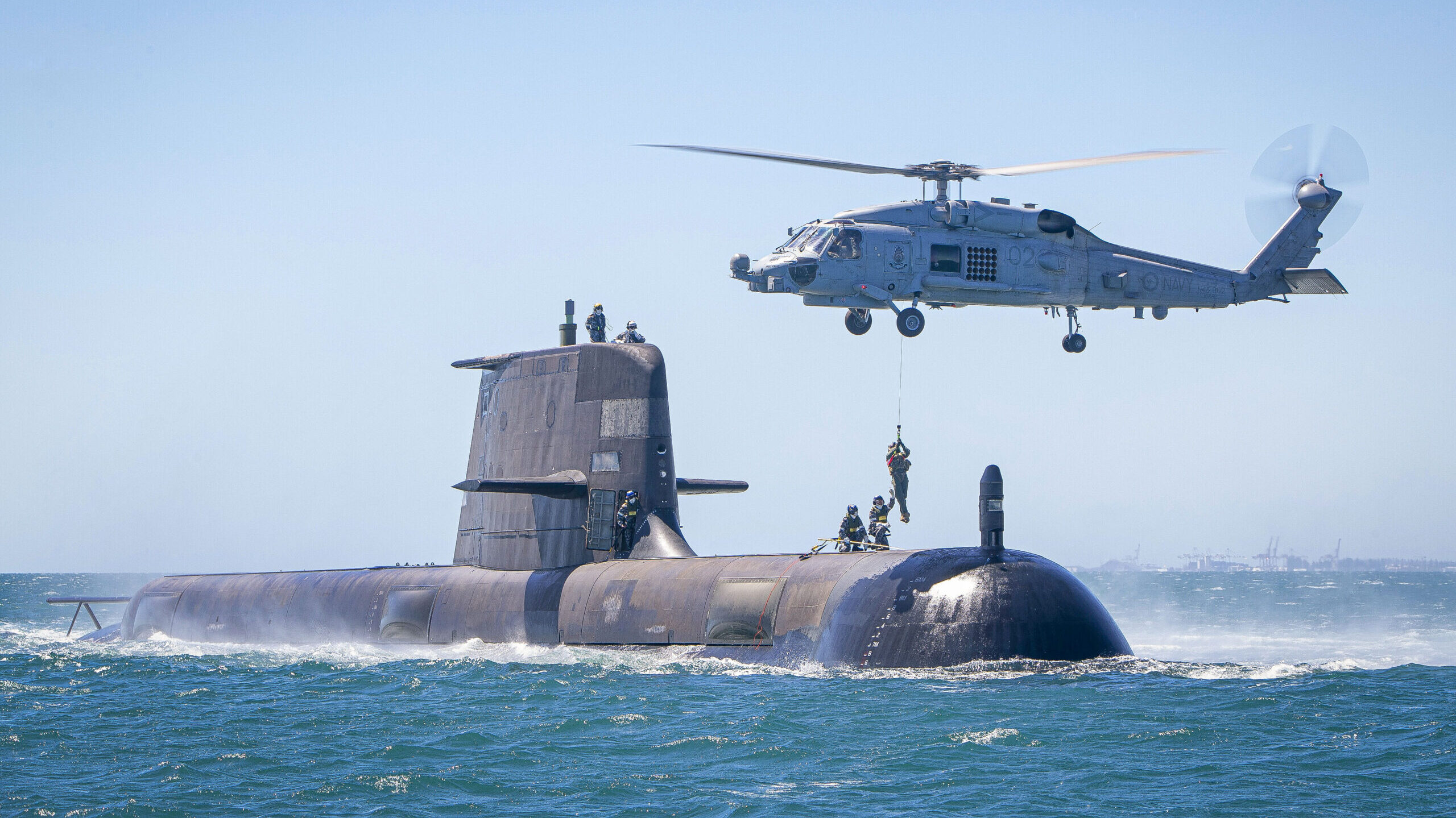
HMAS Rankin conducts helicopter transfers in Cockburn Sound, Western Australia, as part of Rankin’s training assessments to ensure the boat is ready to deploy. (Photo courtesy of the Royal Australian Navy.)
WASHINGTON: As initial trilateral discussions continue between the AUKUS signatories, House lawmakers have moved to establish a “joint training pipeline” for submarine officers between the US and Royal Australian navies.
The legislation, dubbed the Australia-U.S. Submarine Officer Pipeline Act, was introduced last week by Rep. Joe Courtney, D-Conn., and included as an amendment to this year’s defense policy bill, which was favorably voted out of the House Armed Services Committee early this morning.
“The AUKUS alliance is the most important security partnership that America has entered into in decades, and at its core is the creation of an Australian fleet of nuclear-powered submarines — the same world-beating technology operated by our own US Navy, vital to keeping up with today’s challenges in the vast expanse of the Indo-Pacific,” Courtney said of the bill after the committee concluded its marathon mark up of the Fiscal Year 2023 National Defense Authorization Act.
“Our bill authorizes an education and training program for Royal Australian Navy submariners to receive formal training right alongside our own U.S. Navy submariners, which will maximize efficiency down the road when we’re working together beneath the waves,” he said.
RELATED: What AUKUS means for Australia: More than nuclear subs
The legislation was co-sponsored by Democratic Reps. Derek Kilmer, Wash., and Donald Norcross, N.J., as well as Republican Reps. Rob Wittman, Va., Mike Gallagher, Wisc., and Blake Moore, Utah.
On paper, the legislation now must receive a vote from the full House as well as survive joint conference negotiations with Senate authorizers before being ultimately signed into law by President Joe Biden. But, given Congress’ broad support for AUKUS — the security agreement between the US, United Kingdom and Australia that includes sharing nuclear submarine technology with the latter country — the amendment will likely proceed through the legislative process without controversy.
Courtney’s submariner legislation would allow for two Royal Australian Navy submariners being selected to come to the US each year for training at the US Navy’s sub school, enroll in the Submarine Officer Basic Course and be assigned to duty on an operational US sub at sea.
Separately, Navy Secretary Carlos Del Toro late last week announced Rear Adm. Dave Goggins was tapped to become a “special assistant” supporting the AUKUS agreement. Goggins, who is currently the Program Executive Officer for Attack Submarines, will be relieved by Rear Adm. Jonathon Rucker.
“Admiral Goggins selection to lead AUKUS will further our efforts to strengthen our strategic partnerships with Australia and the United Kingdom. Dave comes to us at a critical time in the consultation period of AUKUS and is the right person to spearhead the analysis of the submarine development production and testing efforts,” Del Toro said in a June 17 statement.
Several thousand miles away from Capitol Hill over in Australia, Breaking Defense has reported that Australian government officials are investing heavily in preparation for its future nuclear submarine force. Prime Minister Scott Morrison in March committed $10 billion AUD ($7.3 billion) to build a new base for nuclear submarines on the eastern seaboard.
However, there is also growing anxiety about the “submarine gap” that is anticipated to come after the country retires its Collins-class vessels but before the nuclear subs expected via the AUKUS agreement are delivered. That anxiety is mostly fueled by the uncertainty around when exactly latter will come to fruition. When officials from Washington, London and Sydney announced the agreement in September 2021, they said the first step would be an 18-month consultation and planning period.
“So, Australia must keep the Collins submarines running until 2040+ or acquire some new conventional submarines. The fact is that arguably both must be done, or the Collins submarines will be retiring at age 45 and beyond,” a group of former Royal Australian Navy submariners wrote in a May paper titled, “An Expression of Grave Concern.”
Kurt Campbell, a senior official at the National Security Council, recently said the US will soon launch a new effort to “step up our game substantially in the Pacific. This is an area of enormous strategic importance. We have historical and moral responsibilities. Both from the Second World War and subsequent the nuclear age.”



